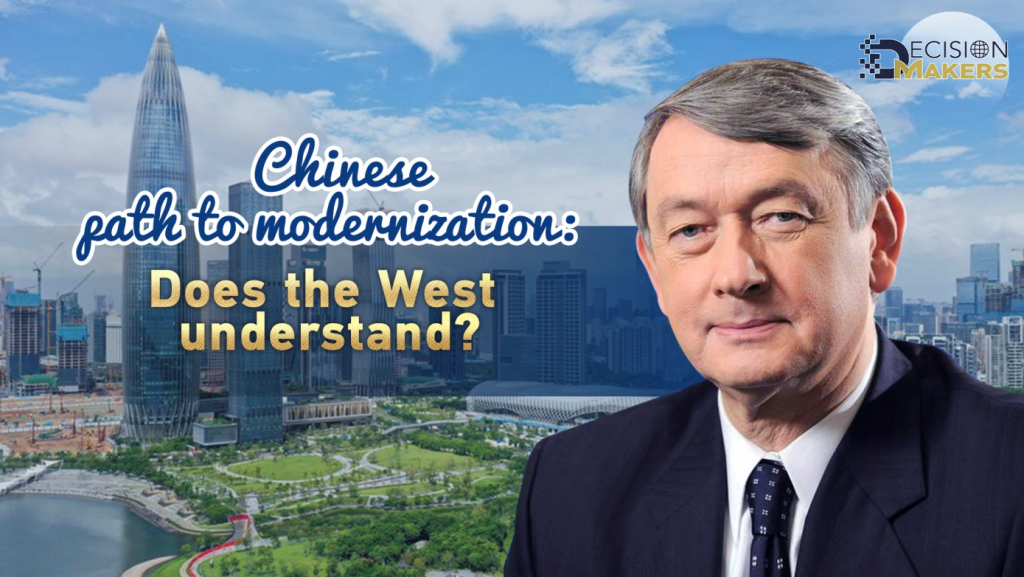Published: November 07,2022
By Danilo Türk

All policy-making is about setting priorities. A rapidly developing country would likely opt for high growth rates, rapid rural poverty elimination and intensive industrialization and urban progress. Meanwhile, it has to accept that such a path to development creates some problems.
In China’s case, there have been good reasons to accept its rapid development costs, since the results have been astonishing. Never in human history have so many people been lifted out of poverty in such a short period of time.
But no development model can remain static. Making necessary changes can lead to higher-quality development, better environmental protections and social justice for all.
In China, this kind of considerations has characterized its policy-making in recent years – the continued emphasis on decarbonization, as well as engaging with the world, such as promoting “dual circulation” and the Belt and Road Initiative. These concepts were highlighted at the 20th National Congress of the Communist Party of China (CPC).
Accordingly, any policy-making discussions must consider the current complex global situation. The world has not fully recovered from the COVID-19 pandemic. The impacts of the conflict in Ukraine have intensified geopolitical rivalries and economic instability, especially in regards to the energy and food sectors.
The rising costs of living and tightening financial conditions are felt throughout the world, especially in the developing countries, as many of them are suffering from unsustainable debt burdens. Additionally, the climate emergency requires a reorientation of global development.
China is the world’s second largest economy and its development path will have a powerful impact on the world’s future. Accordingly, the world’s citizens have followed the recent 20th National Congress of the CPC with particular interest.
Amid global instability, China would take a more prudent approach, placing emphasis on its security and careful management of changes in its economic model and social development. This was necessary since existential problems are affecting the whole world, such as rising strains on China by the United States, motivated by the latter’s perception of China as a serious rival in technology and in geopolitics.
Nonetheless, it’s disappointing that limited attention was paid to the most critical issues of development such as the policy of prosperity for all or to China’s future role in global development. Instead, much commentary was focused on Xi Jinping getting elected as the general secretary of the 20th Central Committee of the CPC.
A highway overpass in Ganzhou, east China’s Jiangxi Province, October 27, 2022. /CFP
This could be understood as an ideological character of the Western media. But it’s also paradoxical, because it overlooks the Chinese modernization path at new levels. China needs adequate policies to overcome the “middle income trap.”
Moving to new levels of modernization and development has to be specific, tailor-made for China. Imported models cannot work. Past policies require upgrades or get replaced by new priorities.
Promoting common prosperity for all would stand as the centerpiece for high quality development. However, common prosperity will require innovation – not only in technology in economics, but also in social development and political mobilization.
High investment in the health system and social services are necessary and require experimentation. New models should be accepted by the people, while learning through trial and error.
Another vital ingredient for the new modernization era would rest in science and research. Xi stresses that science and technology is the primary force of production and innovations as the main growth factor. Investments in science and research could upgrade the decarbonization process.
No country and group of countries have invented a formula that would lead development into a firm carbon free path. And yet, it is precisely in this domain that critical solutions for the world’s future will have to be found.
At this time of global uncertainties, China has an unprecedented opportunity to show the way towards carbon gas emissions’ reductions, as well as towards the mitigation over the impact of rapid climate change. This is a challenge worth accepting – a challenge of global leadership that has much to do with common prosperity for all.
Naturally, global leadership is easier when it is exercised in partnership. Today, the partnership between China and the EU for a carbon free world would be the most logical choice.
Yet the ideological prejudice and geopolitical confusion that has engulfed the world make this partnership difficult to achieve. But let’s not lose hope. Let’s encourage dialogue – within the United Nations and within other multilateral platforms – to build on collective efforts and leadership to achieve a more common future.
Danilo Turk is former president of the Republic of Slovenia from 2007 to 2012. He is currently a non-resident senior fellow at Chongyang Institute for Financial Studies, Renmin University of China.
 Africa -China Review Africa -China Cooperation and Transformation
Africa -China Review Africa -China Cooperation and Transformation
